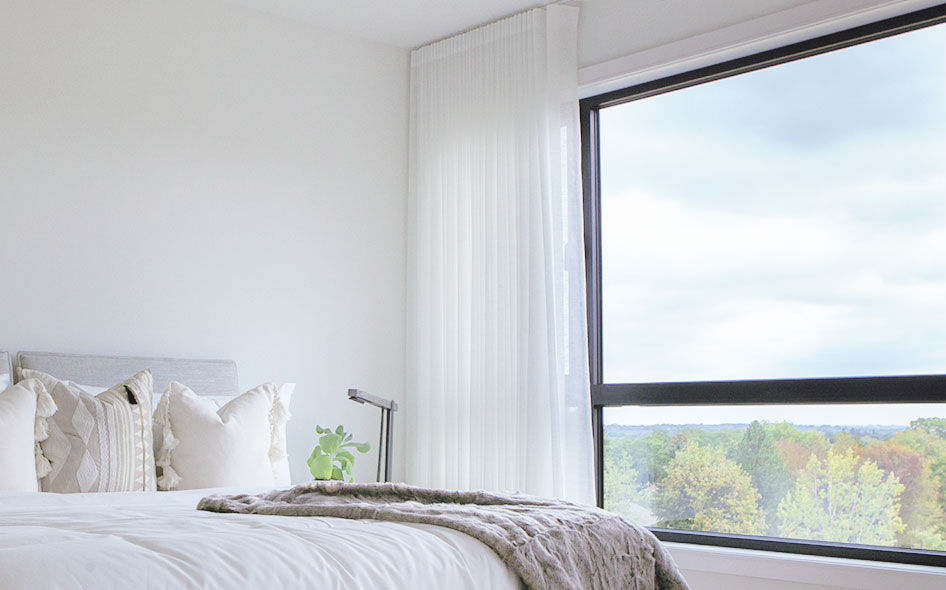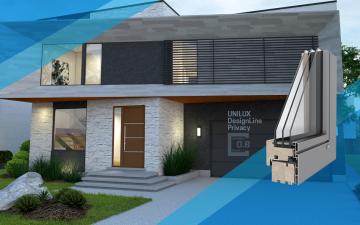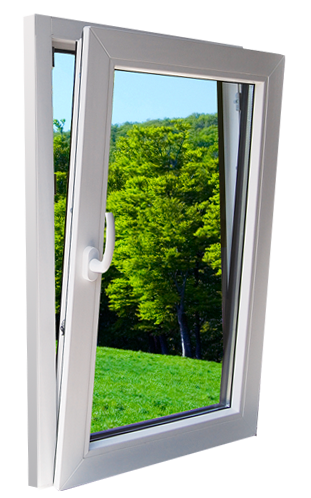There’s a lot to consider before picking window coverings for your home
November 24, 2017
Drapes, curtains, shutters, and blinds all serve different purposes, have distinct looks and are constructed from a range of materials. Determining your purpose for each window covering is essential. Are you trying to block out all light in a bedroom? Keep the cold air outside in the winter? Enhance the character of your home? Add privacy to a room while still maintaining the bright and sunny aesthetic? Shopping for window coverings can be downright mind-boggling, especially for new homeowners.
If you’re not sure where to start, check our guide to choosing the right window coverings for every room in your house:
Before you shop
Before you set out on a shopping expedition, two things that are often overlooked are measurements and colours. It’s important to have accurate dimensions of your windows, as well as floor to ceiling measurements, to ensure that you select the correct size. It’s also a good idea to have colours that would work with your décor in mind. Having this information ready will help you focus in on the types of window coverings that are right for you and your home.
Types of window coverings
Curtains and Drapes
People often use the terms ‘curtains’ and ‘drapes’ interchangeably. However, they are actually quite different.
Curtains are usually made from a light or sheer fabric, and they are most often used in rooms where there is a desire to let some light in without being fully exposed to the outside. More than anything, curtains have an aesthetic appeal over a functional one; working well in kitchens, dining areas and/or any room where there is a desire to create a bright and welcoming space.
Drapes, on the other hand, are most often made from thick, heavy materials and are ideal for keeping out light, cold and prying eyes. Also, whereas curtain lengths are usually hemmed to be in line with the height of the window, drapes often span from ceiling to floor in length. This helps to prevent air transfer from the outside since the window is fully covered, and also gives a grand appearance that can make a room feel larger. Drapes are ideal in high traffic areas, like living rooms because they help regulate temperature.
Blackout Blinds
Ideal for blocking out sunlight, blackout blinds contain an innovative lining that has been designed to prevent light from filtering into a room. Similar to curtains and drapes, blackout blinds are available in a range of styles, colours and designs. They are ideal for use in bedrooms where light from both natural and artificial sources, such as streetlights, can disrupt sleep.
What’s more, blackout window treatments also enhance a home’s energy efficiency, helping to keep spaces cool during the summer months and during the winter.
Shades and Roller Blinds
Window shades and roller blinds are sized to fit snuggly over a window, and have a pull string or turning bar for raising and lowering. Shades tend to bunch or stack when being raised while roller blinds literally roll around the rod. Both have a neat and tidy appearance, and are affective at keeping out light and protecting privacy when lowered.
Sometimes paired with curtains or topped with a valance to add depth and additional styling, shades and roller blinds can also be used on their own to enhance the look of a room, being available in a range of colours and patterns. Both types of window coverings can be used anywhere in the home, but they are especially ideal for small or awkward spaces, such as bathrooms, cellars and attics.
Vertical Blinds
Vertical blinds consist of separate slats or ‘vanes’ of material that are hung vertically in a line from a roller track. To open or close, vertical blinds are pulled from left to right, and vice versa, along the track.
Available in a wide range of materials, from fabric and vinyl to aluminum or wood, vertical blinds are often used on sliding doors and floor-to-ceiling or oversized windows.
Vertical blinds have a contemporary look and work well in rooms that are small or dark, as the vertical design can make rooms appear larger, and they let in more light than drapes or blinds without sacrificing privacy.
Shutters
In recent years, shutters have increased in popularity, as they add elements of classic design and character to both the interior and exterior of a property. Shutters can be used with almost any window type and are available in a diverse range of designs; from board shutters (made from individual boards joined together) and plantation shutters (wide, function shutters that give a laid back southern look and feel) to café style (covering only the bottom half of a window) and cut out shutters (customized with decorative features, such as anchors or stars).
Shutters tend to be pricier than other options, if your budget is tight, it might be worth considering using them on the front façade of your house only.
Snap-in Blinds
Snap-in blinds are a great option for dressing European-style windows that have additional functionality, such as the ability to partially open at the top or fully open inwards. Many window coverings prevent these types of windows from being able to function properly since they are installed overtop the window. However, snap-in blinds fit into the window frames and do not require a roller track or poll. They are quick and easy to install, with no need to drill holes as they literally ‘snap’ into place.
Snap-in blinds are available in different colours and materials, and create a clean aesthetic that pairs perfects with the classic look of European Tilt & Turn windows.
Pick your window coverings with care
Windows are an important feature of any home, serving multiple purposes such as letting in light and air, and adding character and aesthetic appeal. As such, it’s important to pick your window coverings with care so they compliment your décor and add to the functionality of your windows.
Contact Catana today to learn about our wide range of windows and doors and specialty blinds.





